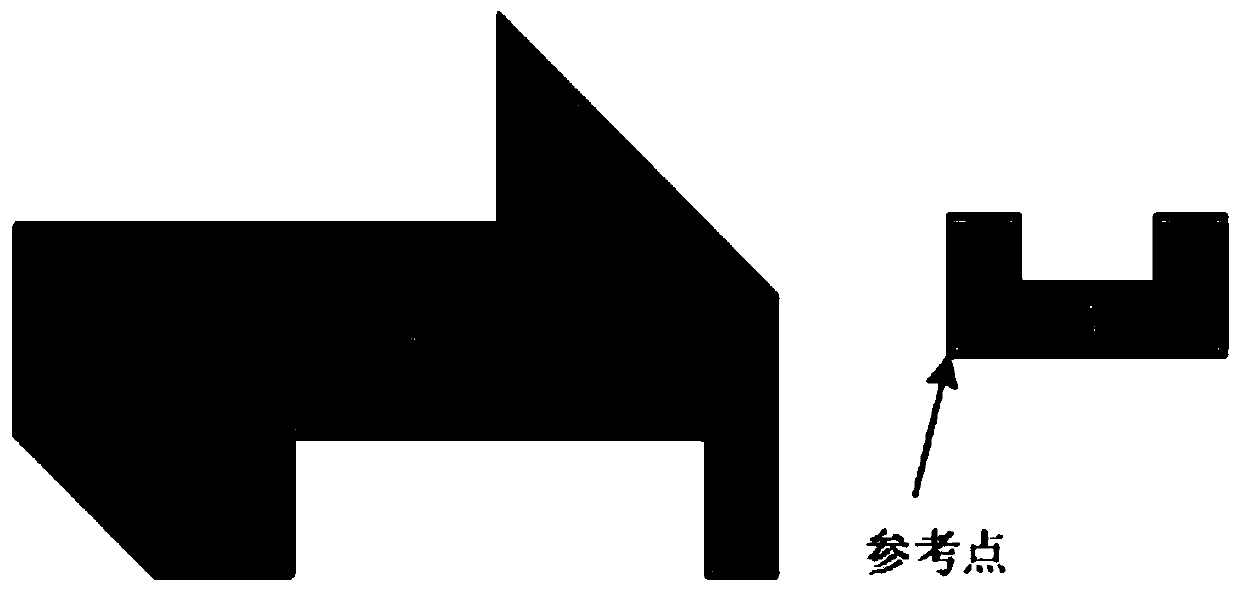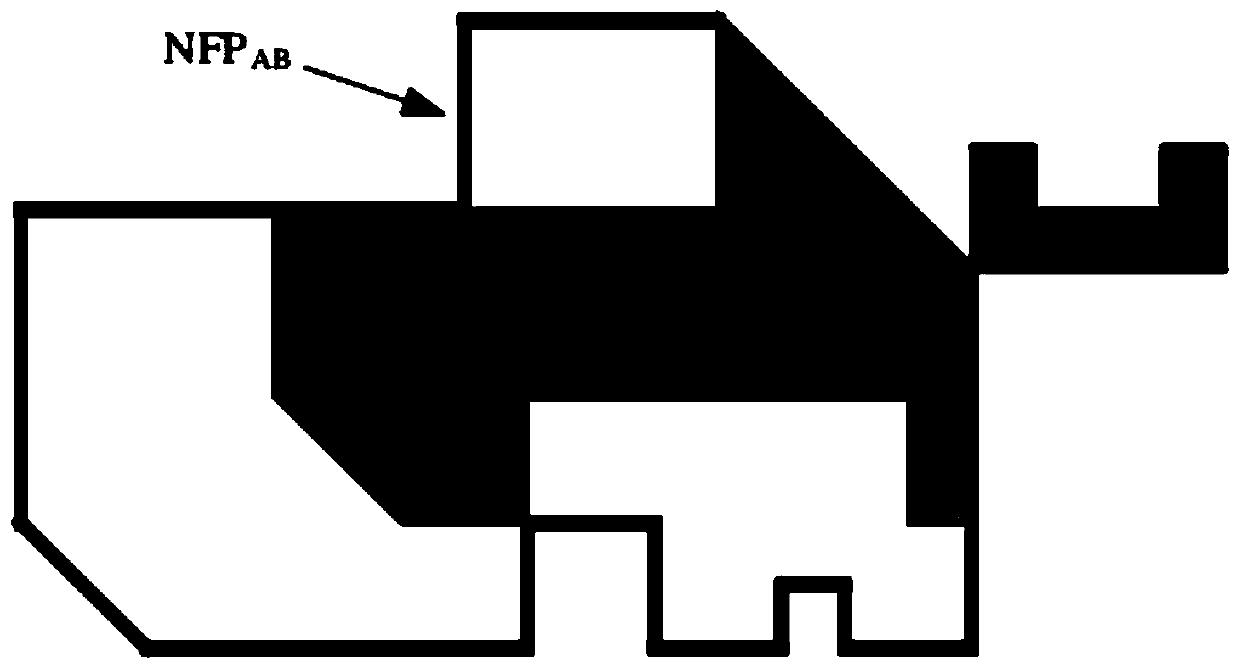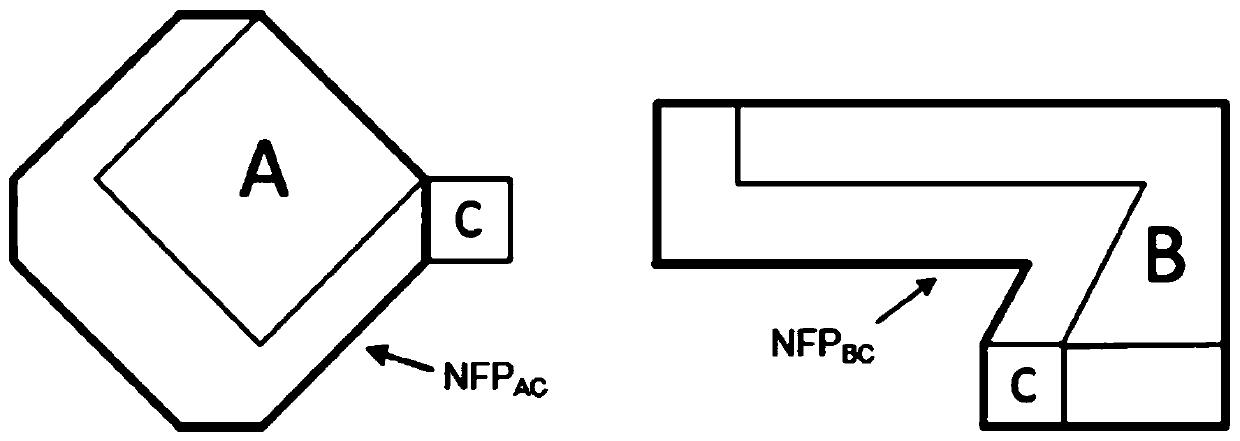Automatic layout method based on critical polygonal plates
A critical polygon, automatic arrangement technology, applied in the fields of genetic laws, genetic models, data processing applications, etc., can solve the problem of low utilization rate of plates, and achieve the effect of reducing the layout time and improving the utilization rate of plates.
- Summary
- Abstract
- Description
- Claims
- Application Information
AI Technical Summary
Problems solved by technology
Method used
Image
Examples
Embodiment 1
[0057] Find the critical polygon between two parts.
[0058] see figure 1 , figure 1 It is a schematic diagram of two irregular plate parts, and their reference points are shown in the figure;
[0059] Critical polygon definition: given two polygons A and B, polygon A is fixed, polygon B rotates around polygon A (during this period, B and A keep at least one point of contact, and B cannot rotate), select the A point is used as a reference point (usually the bottom leftmost vertex of B is selected), and the polygon formed by the motion trajectory of the reference point is the critical polygon of B relative to A, which is denoted as NFP AB ;
[0060] Regarding the movement of polygon B around A, there are two main considerations: the determination of the movement direction and the determination of the movement distance.
[0061] There are three situations for judging the moving direction of B:
[0062] If vertex A of polygon A i and vertex B of polygon B j contact, find t...
Embodiment 2
[0072] Determine where parts can be drained.
[0073] Part A is the discharge initial part;
[0074] Obtain the critical polygons of parts B and A;
[0075] Limit the dischargeable position of part B to each vertex of the critical polygon;
[0076] Drain part B.
[0077] Among them, the positions of parts A and B are Figure 4 dotted line position;
[0078] The solution steps of the algorithm for the dischargeable position of part C are as follows:
[0079] Obtain the critical polygons of part C and part A, and obtain the critical polygons of part C and part B; for example image 3 shown;
[0080] From the definition of the critical polygon, it can be seen that when the reference point of part C is placed on the side of the critical polygon, it can ensure that part C is close to and does not overlap with its relative parts.
[0081] 2 critical polygons at sheet positions such as Figure 4 shown;
[0082] In order to increase the rationality of discharge, in addition t...
PUM
 Login to View More
Login to View More Abstract
Description
Claims
Application Information
 Login to View More
Login to View More - R&D
- Intellectual Property
- Life Sciences
- Materials
- Tech Scout
- Unparalleled Data Quality
- Higher Quality Content
- 60% Fewer Hallucinations
Browse by: Latest US Patents, China's latest patents, Technical Efficacy Thesaurus, Application Domain, Technology Topic, Popular Technical Reports.
© 2025 PatSnap. All rights reserved.Legal|Privacy policy|Modern Slavery Act Transparency Statement|Sitemap|About US| Contact US: help@patsnap.com



